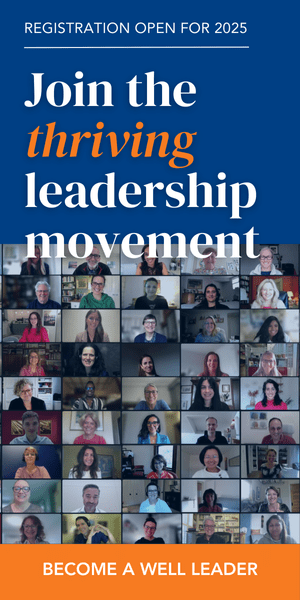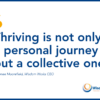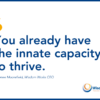1. They develop a personal wellbeing vision
Some leaders call it their personal business plan, others—like Nike’s Jorge Casimiro—call it their “inner Pre.” Your Inner Pre (named after track and field star Steve Prefontaine who was one of the original Nike employees) is what you’re passionate about, what gets you excited about life, says Casimiro, Nike’s Vice President & COO of Global Community Impact. “Without your Inner Pre, you’re never going to prioritize your life over work or have the kind of balance needed for being happy and effective, at work or at home,” he says. His Inner Pre is his family, which gives him the structure he needs to build a powerful and impactful work life. What’s your Inner Pre?
Read more about Nike’s Jorge Casimiro here>
2. They manage their energy
According to a Harvard Medical School survey, 96% of senior leaders feel burnout to some degree, and one-third label it extreme. With burnout on the rise, it’s not easy for busy leaders to bring their best selves to work. But learning how to manage your energy can help. Scott Pann, Senior Vice President of UBS, has figured this out—and then some. His secret fuel is eating, exercising, and recharging strategically, and he uses these to deliver a high level of vitality to his work, his organization, and his non-work responsibilities and passions, such as family and church. An avid role model of wellbeing, his work-days are full of energy-boosting snacks and movement, like standing at his desk, walking during meetings, and taking breaks. How can you better manage your energy?
See Scott Pann’s energy-boosting daily calendar here>
3. They are grateful
Research says huge health and wellbeing benefits come from practicing gratitude—everything from a stronger immune system to simply feeling less lonely and happier. But there are professional plusses as well. Grateful people are more likely to achieve their personal goals, according to Robert Emmons, University of California professor and author of the book, Thanks! How the New Science of Gratitude Can Make You Happier. And leadership rooted in gratitude can boost profits. Doug Rauch, former president of Trader Joe’s, said this in the book, Grateful Leadership: “Magic occurs when strength of purpose is coupled with a culture of trust, care, and gratitude. This focuses on optimizing the value for all the stakeholders, which translates into an increase in revenue.” How can gratitude become part of your wellbeing leadership practice?
Read more about the leadership power of gratitude here>
What other traits have you seen in your favorite wellbeing leaders? Nominate a wellbeing leader here! Tell us why you think they’re leading wellbeing, and we’ll profile them in our Wellbeing + Strategy blog.
READ MORE
• 6 Easy Ways to Make Your Meetings Healthier Today
• Building a Culture of Wellbeing? 7 Must-Know Leadership Roles
• 3 Leaders Who Lead Wellbeing All Year Long
Photo Credit: Shutterstock







